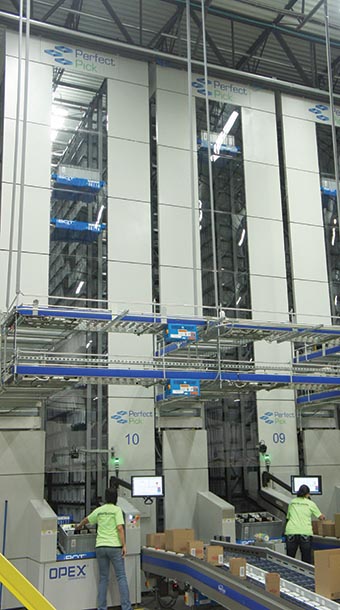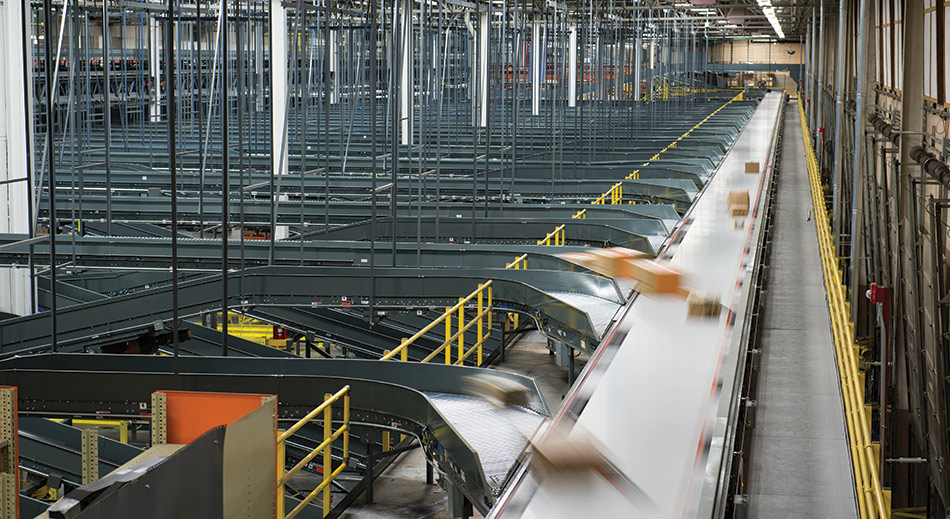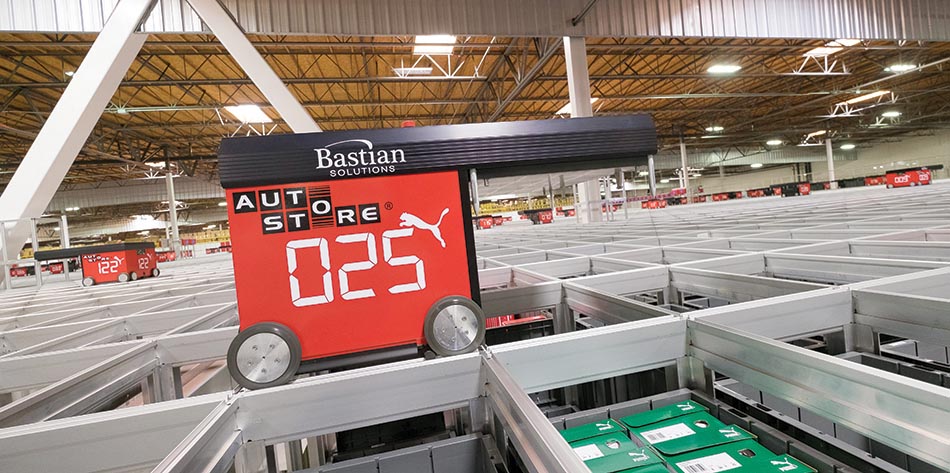If holiday shopping wore you out in the past few weeks, just be grateful you aren’t a retailer. And if you are a retailer, you have our sympathies.
Inventory management in an on-demand world isn’t easy today, and it doesn’t seem poised to get much easier anytime soon. In fact, real tension exists between the brick-and-mortar side of the house and the e-commerce side.
“It’s an ever-evolving situation with more dynamics in play than I’ve ever seen,” says Mike Khodl, vice president of global solution management at Dematic.
First, consider all the possible points of contact with customers. Online. Parcel delivery. Lockers. Click and pick up. Traditional brick and mortar. Store inventory for online orders. Now multiply that by two to account for outbound inventory from DCs to inbound returns to those same DCs. And, these are just six of the obvious scenarios, most of which are relatively new.
“Fulfillment, years ago, was done in bulk and just from a store point of view. Now it’s about anywhere the customer wants to be able to buy it or return it,” said Blake Nordstorm, co-president of retailer Nordstrom, in The Wall Street Journal.
Clearly, there’s nothing easy about the shift from batch pick to dynamic order management. Or as John A. White III, president and CEO at Fortna, says, inventory management in an on-demand world is one of the biggest challenges in the supply chain today.
Leading forces at work
Khodl and others started to see a real shift 24 months ago when leading retailers decided to reconcile inventory management practices between the two order streams. But they aren’t anywhere near reconciled yet. “Everyone is still trying to figure it out,” says Khodl.
Kevin Reader, director of business development and marketing for Knapp, estimates that retailers are, at most, 5% of the way there.
Little wonder with so many dynamic forces at work here. To begin, brick and mortar and e-commerce are two fundamentally different demand streams. A store gets inventory on schedule while customer demand drives e-commerce.
 How they feed those streams is quite different. For instance, where should a DC be located—closest to stores or closest to a parcel delivery hub? What if the DC manages both store and e-commerce inventory? How does that influence DC placement?
How they feed those streams is quite different. For instance, where should a DC be located—closest to stores or closest to a parcel delivery hub? What if the DC manages both store and e-commerce inventory? How does that influence DC placement?
What happens inside the DC is different, too. In fact, there’s a great irony in how most retailers run their businesses these days. When dealing with customers, they are omni-channel—one face regardless of the point of contact. But when it comes to running the DC, they are multi-channel—brick-and-mortar and e-commerce businesses managing inventory differently in the same DC.
Procurement is typically separate, even though they are buying many of the same items. Inventory management is just as separate even though it’s often all in the same DC. Fulfillment is separate and probably not equal. Managing returns is separate and awkward at best. Yikes, no wonder there’s tension.
“Some are starting to blend the two,” says Bryan Jensen, chairman and executive vice president at St. Onge Co. “But that raises yet another question: Which one should have priority in the DC? After all, a shipment to a store is not a sale. It’s still a hope. But an e-commerce pick is a sale that’s already been paid for.”
Jensen makes it clear that blending the two fulfillment streams is not the answer for everyone. Like most everything else about inventory management in an on-demand world, it depends.
Universally, access to inventory on the DC floor is critical. And it’s been made much more difficult with the surge in SKUs lately. Not only have storage and fulfillment systems grown in size, but now there must be easy access to every single SKU all the time, says Mike Clemens, principal consulting engineer with Bastian Solutions.
Then there’s the matter of forecasts, visibility, planning, FIFO (first-in, last-out) and LIFO (last-in, first-out) practices, expiration dates and regulations. These are just a few of the leading inventory management considerations in the on-demand world.
And for those who think e-commerce-only retailers have it easy, you’re only partially right. They don’t have to cope with two different demand streams, which helps. But inventory management is still a challenge. There are still the vagaries of customer demand, SKU proliferation and the accuracy of forecasts, to name three key factors.

Getting orders out the door as quickly as possible is as important as picking the orders quickly.
Getting a grip on costs
So, how do retailers get their arms around all this?
To White of Fortna, it’s a matter of balancing cost and service. The only problem is that costs are in flux and the definition of service has changed, he adds.
Let’s start with costs inside the DC. According to Clemens of Bastian, the cost of storage and fulfillment systems is directly related to the number of SKUs processed daily. Both size and complexity figure in the equation.
For instance, he says goods-to-person systems are most cost effective when volumes are under 100,000 units a day. Move above that level (many companies are on that path) and shuttle systems come into the picture. At the higher levels, tilt-tray and cross-belt sortation systems are needed to handle the volumes. Quite simply, costs ramp up along with volumes.
This doesn’t even factor in the lack of labor to fill orders, explains Dematic’s Khodl. That alone is an important force behind the drive to automation regardless of order volumes, he adds.
There’s also the matter of how much inventory is enough. We’re not talking total SKUs here but right-sizing inventory units in the DC taking into account cycle stock, safety stock, store presentation stock and in-transit stock says White. “If a company can remove just one day’s worth of inventory from its supply chain, that’s a huge savings. The most sophisticated companies approach this at the SKU level,” he adds.

The cost of storage and fulfillment systems is directly related to the number of SKUs processed daily.
Service levels
“When it comes to service in an on-demand world, there’s a lot less time between the flash of when a customer wants something and the bang of when they have it,” says consultant David Schneider of David K. Schneider & Co. “Customer service today is based on the perception of how well retailers manage the time between the flash and the bang,” he adds.
No company believes in a rapid flash/bang sequence more than Amazon. And to make that happen, the giant builds out DCs across the country to be as close to each customer as possible. This is where the location, size and cost of DCs enters.
Clearly, not every retailer has to emulate Amazon. After all, Amazon doesn’t have to balance both brick-and-mortar and e-commerce demand streams. Nevertheless, the leaders among those that do are certainly paying attention to Amazon and deciding where their fulfillment fulcrum sits. Regional DCs or a national DC? Low-cost rural areas or center city? Store and e-commerce inventory managed separately, together or in separate facilities? And, that’s just a starter list.
Much of what has happened so far has been attributed to Amazon and its practices. However, Jensen of St. Onge contends that Amazon has not changed inventory management. Instead, e-commerce itself is responsible. And Amazon has developed one operational answer that works for it and potentially few others.
After all, expected services and service levels depend entirely on the profile of each retailer’s customers. “Companies have to understand customer needs and meet those needs in the best way for their customers,” explains Reader of Knapp.
And customers are not all alike. Take Macy’s and The Children’s Place, says Jensen. The former is a luxury retailer and the latter a budget retailer. Their customers are different. Macy’s customers, which stretch across several age groups, are looking for broad luxury department store offerings. The Children’s Place is apparel and accessories for children of all ages. It doesn’t take much to drill down on those two customer profiles to see that expectations might differ radically.
All of that said, inventory management challenges are not just outbound based. What about returns?
Khodl of Dematic says “returns are bigger than anyone wants to admit and everyone ignores the problem.”
The example he uses is the multi-billion dollar e-commerce startup Stitch Fix. The company curates and boxes up five or six apparel items for subscribers on a pre-set schedule. Members then decide what they want to keep and send back everything else. Returns are clearly not insignificant.
“This creates a reverse flow into their DC that has to be processed and the inventory managed,” says Khodl. Yet, most retailers today handle returns with far less sophistication than on the outbound side.
He says that retailers are beginning to bring up the subject of returns more frequently, and that companies like Dematic are developing dedicated systems. But this is in even earlier stages than outbound inventory management.
As complicated as all this sounds, White boils it down quite succinctly: “Every inventory management strategy needs to be tailored to the company’s supply chain strategy to deal effectively with an on-demand world.” For most right now, that’s easier said than done.
Companies mentioned in this article:
- Bastian Solutions
- David K. Schneider & Co.
- Dematic
- Fortna
- Knapp
- St. Onge Co.
Article topics








